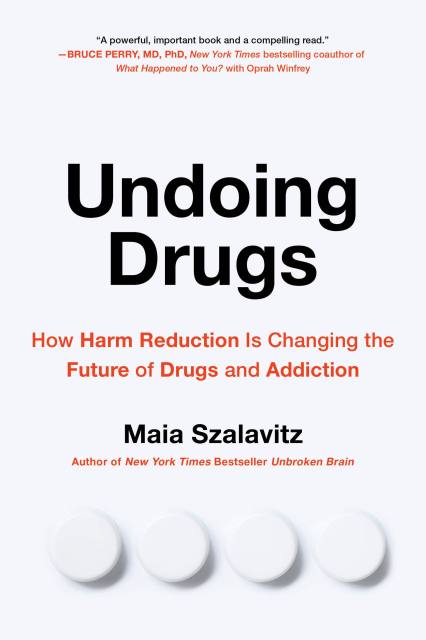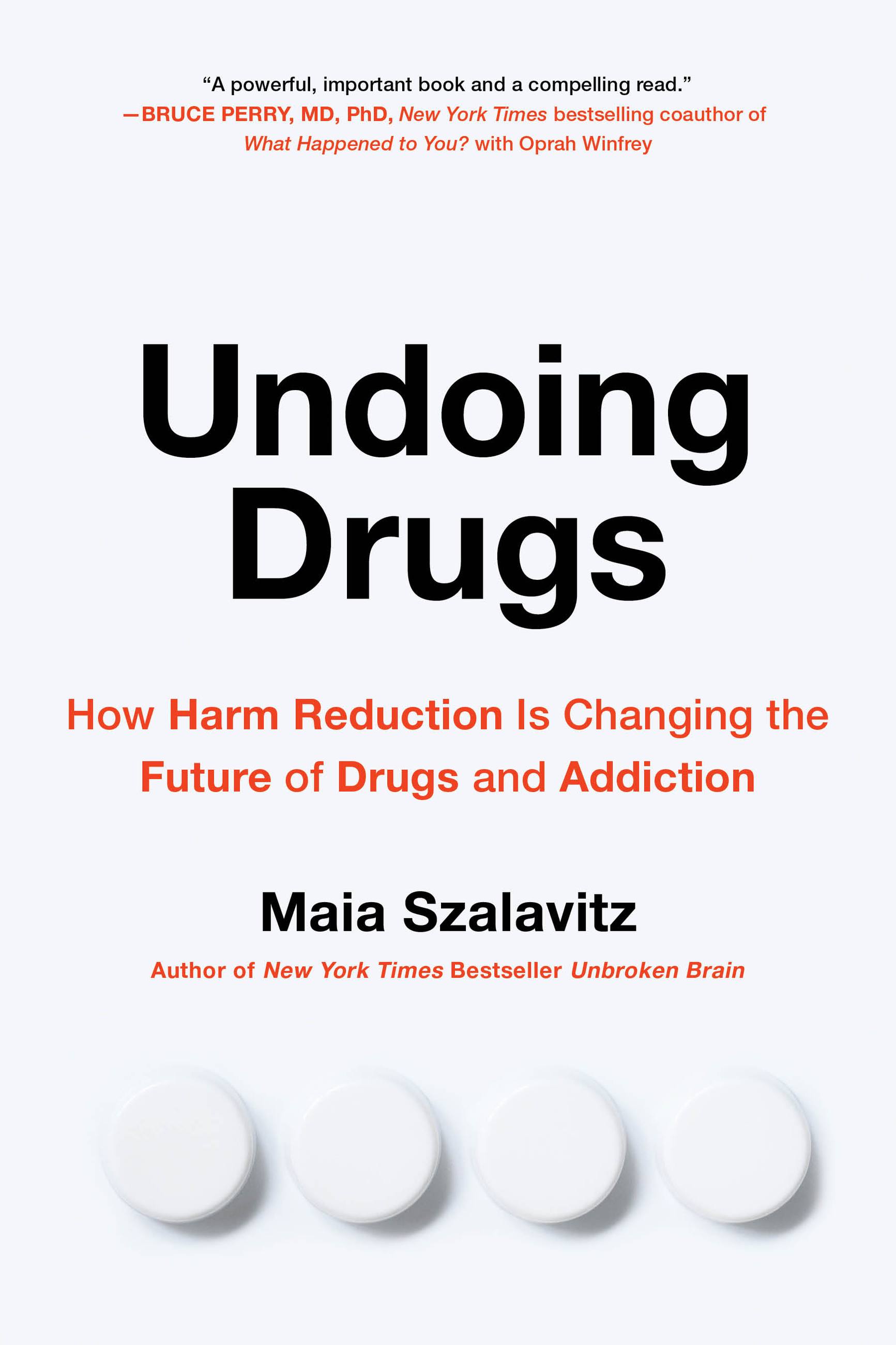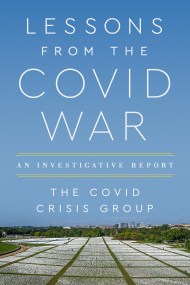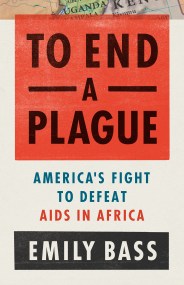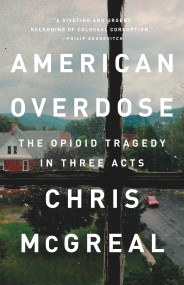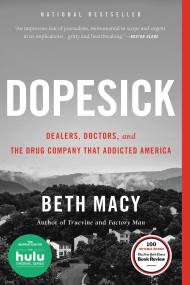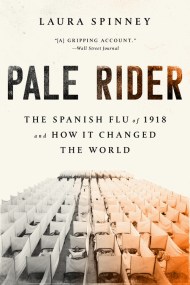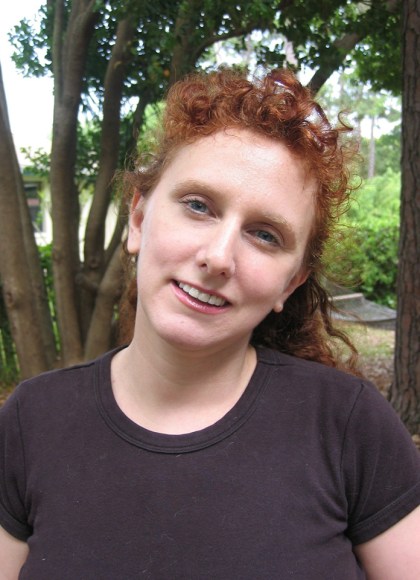Promotion
Use code MOM24 for 20% off site wide + free shipping over $45
Undoing Drugs
How Harm Reduction Is Changing the Future of Drugs and Addiction
Contributors
Formats and Prices
Price
$11.99Price
$15.99 CADFormat
Format:
- ebook $11.99 $15.99 CAD
- Hardcover $30.00 $38.00 CAD
- Audiobook Download (Unabridged) $31.99
- Trade Paperback $17.99 $22.99 CAD
This item is a preorder. Your payment method will be charged immediately, and the product is expected to ship on or around July 27, 2021. This date is subject to change due to shipping delays beyond our control.
Also available from:
From “one of the bravest, smartest writers about addiction anywhere” (Johann Hari, New York Times bestselling author)—the untold story of harm reduction, a surprisingly simple idea with enormous power
Drug overdoses now kill more Americans annually than guns, cars or breast cancer. But we have tried to solve this national crisis with policies that only made matters worse. In the name of “sending the right message,” we have maximized the spread of infectious disease, torn families apart, incarcerated millions of mostly Black and Brown people—and utterly failed to either prevent addiction or make effective treatment for it widely available.
There is another way, one that is proven to work. However, it runs counter to much of the received wisdom of our criminal and medical industrial complexes. It is called harm reduction. Developed and championed by an outcast group of people who use drugs and by former users and public health geeks, harm reduction offers guidance on how to save lives and improve health. And it provides a way of understanding behavior and culture that has relevance far beyond drugs.
In a spellbinding narrative rooted in an urgent call to action, Undoing Drugs tells the story of how a small group of committed people changed the world, illuminating the power of a great idea. It illustrates how hard it can be to take on widely accepted conventional wisdom—and what is necessary to overcome this resistance. It is also about how personal, direct human connection and kindness can inspire profound transformation. Ultimately, Undoing Drugs offers a path forward—revolutionizing not only the treatment of addiction, but also our treatment of behavioral and societal issues.
Drug overdoses now kill more Americans annually than guns, cars or breast cancer. But we have tried to solve this national crisis with policies that only made matters worse. In the name of “sending the right message,” we have maximized the spread of infectious disease, torn families apart, incarcerated millions of mostly Black and Brown people—and utterly failed to either prevent addiction or make effective treatment for it widely available.
There is another way, one that is proven to work. However, it runs counter to much of the received wisdom of our criminal and medical industrial complexes. It is called harm reduction. Developed and championed by an outcast group of people who use drugs and by former users and public health geeks, harm reduction offers guidance on how to save lives and improve health. And it provides a way of understanding behavior and culture that has relevance far beyond drugs.
In a spellbinding narrative rooted in an urgent call to action, Undoing Drugs tells the story of how a small group of committed people changed the world, illuminating the power of a great idea. It illustrates how hard it can be to take on widely accepted conventional wisdom—and what is necessary to overcome this resistance. It is also about how personal, direct human connection and kindness can inspire profound transformation. Ultimately, Undoing Drugs offers a path forward—revolutionizing not only the treatment of addiction, but also our treatment of behavioral and societal issues.
Genre:
-
“With characteristic flair Maia Szalavitz presents a vibrant personal account of recovery, a broadly researched history of how a fringe idea transformed into a powerful therapeutic and social movement, and a heartfelt, irrefutable call for a sane and humane approach to the devastation of substance addiction.”Gabor Maté, MD, author of In The Realm of Hungry Ghosts: Close Encounters With Addiction
-
“One of the most inspiring and remarkable stories you will ever read. Small groups of stigmatized people all over the world pioneered a totally new approach to drugs and addiction—and they saved millions of lives. Their incredible story has not been told—until now . If everyone in the US read this book, the drug war and so many drug myths would end tomorrow.”Johann Hari, New York Times bestselling author of Chasing The Scream
-
"Undoing Drugs is a well-researched, thoughtful history of our toxic, destructive, failed ‘war on drugs’ that clearly articulates the hopeful promise of harm reduction as a way forward. Maia Szalavitz’s ability to distill and clearly communicate the head-spinning complexities of addiction, policy, health care inequities, academia’s power struggles, the origins and evolution of ideas, practices and programs is hypnotic. This is a powerful, important book, and a compelling read for anyone, but it should be a required text for everyone in public health, social work, mental health, medicine and criminal justice.”Bruce Perry, MD, PhD, bestselling coauthor of What Happened to You? with Oprah Winfrey and adjunct professor of psychiatry at Northwestern’s Feinberg School of Medicine
-
“Deeply researched and character-driven, Undoing Drugs is vivid social history.”The Wall Street Journal
-
Praise for Maia SzalavitzDavid Sheff, New York Times bestselling author of Clean and Beautiful Boy
"Maia Szalavitz is one of our most incisive thinkers about neuroscience in general and addiction in particular and her writing is astonishingly clear and compelling. In the timely, important, and insightful Unbroken Brain, Szalavitz seamlessly interweaves her moving personal story with her investigation into what addiction is (and isn't) and how we can most effectively prevent and treat it." -
"Through the lens of her own gripping story of addiction--supported with empirical evidence--Szalavitz persuasively shows that addiction is a disorder of learning, not one characterized by progressive brain dysfunction."Carl Hart, PhD, author of the Pen/Faulkner award-winning High Price: A Neuroscientist's Journey of Self-Discovery That Challenges Everything You Know About Drugs and Society
-
"Maia Szalavitz is one of the bravest, smartest writers about addiction anywhere. Everything she writes should be read carefully--I guarantee you'll have a lot to think about, and you'll know far more than at the start."Johann Hari, New York Times bestselling author of Chasing the Scream
-
"Of the countless writers out there who's focus is addiction, no one can begin to touch the brilliance of Maia Szalavitz. She is by far my favorite addiction writer, perhaps one of my favorite writers ever. Her passion and exceptional writing talent combined with her exhaustive research, create a book that will inspire, educate, enrage, and entertain. I can only promise one thing: if you read this book, you will never be the same again."Kristen Johnston, actress, author of the New York Times bestselling memoir Guts, addiction advocate, founder of SLAM, NYC
-
"As more professionals realize that addiction isn't really a disease, our challenge is to determine exactly what it is. Szalavitz catalogs the latest scientific knowledge of the biological, environmental and social causes of addiction and explains precisely how they interact over development. The theory is articulate and tight, yet made accessible and compelling through the author's harrowing autobiography. Unbroken Brain provides the most comprehensive and readable explanation of addiction I've yet to see."Marc Lewis, author of The Biology of Desire
-
"... a new way of looking at drug addiction that offers a fresh approach to managing it. [Szalavitz] writes frankly about her background .... In a heartfelt manner, she exposes her own fears and pain ... A dense blending of self-exposure, surprising statistics, and solid science reporting that presents addiction as a misunderstood coping mechanism, a problem whose true nature is not yet recognized by policymakers or the public."Kirkus
-
"Anyone who has battled addiction or seen it harm a loved one will gain insights from Unbroken Brain, and if it influences policymakers, too, everyone will benefit..."Carla Johnson, Associated Press, Big Story
-
"Journalist Szalavitz offers a multifaceted, ground-up renovation of the concept of addiction--both its causes and its cures."PW
-
“The perfect primer for lay audiences…Szalavitz sets the story straight on a topic that is often misinterpreted, making clear that harm reduction is a formidable social and political movement.”The Nation
-
“An in-depth history of a powerful idea, exploring many angles of drug policy…[Szalavitz] also details the racial inequities and social justice tensions that have defined the drug war.”Mother Jones
- On Sale
- Jul 27, 2021
- Page Count
- 304 pages
- Publisher
- Hachette Go
- ISBN-13
- 9780738285757
Newsletter Signup
By clicking ‘Sign Up,’ I acknowledge that I have read and agree to Hachette Book Group’s Privacy Policy and Terms of Use
